On Feb. 12, the newly formed Hay’at Tahrir al Sham and its allies launched an offensive against Syrian regime forces in the southern city of Daraa. The assault was led by two suicide bombers who detonated their vehicle-borne improvised explosive devices (VBIEDs) in the regime-controlled neighborhood of al Manshiyeh. Daraa, which lies just several miles from Syria’s border with Jordan, has long been divided between the insurgents on one side and forces loyal to Bashar al Assad on the other.
Jordan first closed the border crossing near Daraa in 2011. Two years later, in Sept. 2013, Al Nusrah Front and Free Syrian Army-branded groups jointly took control over the area. There have been periodic clashes since then, with Syrian regime forces reportedly gaining ground nearby in recent weeks.
Al Nusrah Front was the name of al Qaeda’s official branch in Syria until July 2016, when the organization was rebranded as Jabhat Fath al Sham (JFS). Then, in January, JFS and four other insurgent groups merged to form Hay’at Tahrir al Sham (HTS), or “Assembly for the Liberation of Syria.”
HTS has posted photos (seen below) on social media from the fighting in Daraa, including an image of one of its “martyrs.” HTS identified the suicide attackers as Abu Riyan al Muhajir, a Jordanian, and Abu Muhammad al Ansari. The use of suicide bombers is telling. Although HTS has tried to obscure the role al Qaeda plays in its operations, “martyrdom” attacks are one of al Qaeda’s signatures. Other Islamist groups allied with al Qaeda in Syria have, by and large, abstained from carrying them out.
Abu Bakr al Baghdadi’s Islamic State, which rivals HTS, is prolific in its use of suicide terrorists. But al Qaeda has been far more selective, only using the tactic in key operations. For example, a number of “martyrs” were deployed during the battle for Aleppo late last year. Their appearance in Daraa likely indicates that HTS has deemed the offensive to be especially important, for one reason or another.
The anti-Assad forces in Daraa coordinate their movements in a joint military operations room known as Al Bunyan al Marsous. (Another, unrelated coalition of forces used this same name in Sirte, Libya.)
The images released by HTS include both the group’s new official logo, representing a famous mosque in Damascus, as well as the watermark used by Al Bunyan al Marsous.
According to On the Ground News (OGN), a small pro-HTS and pro-al Qaeda media outfit based in Syria, Ahrar al Sham and Jaysh al Islam are also participating in the operation. This is significant because Ahrar al Sham, al Qaeda’s longtime battlefield partner in Syria, had clashed with some of the constituent groups in HTS earlier this year. In addition, HTS has been critical of Jaysh al Islam’s participation in peace talks with the Assad regime and others in Astana, Kazakhstan. But assuming the OGN account is accurate, then they are both cooperating with HTS and other local factions in Al Bunyan al Marsous operations room.
The Syrian Observatory for Human Rights (SOHR) describes Assad’s opposition in the city as a mix of “rebel and Islamic Factions,” as well as HTS fighters. SOHR also reports that the Assad regime responded in the early hours of the fighting with more than 20 airstrikes, which were carried out by “warplanes and helicopters,” as well as approximately 15 “ground-to-ground” missile launches. Both sides have incurred casualties.
One short video clip, posted by Qasioun News Agency, purportedly shows explosives being detonated in a tunnel that was dug underneath regime forces in Daraa. A Twitter feed claiming to be affiliated with the Free Syrian Army (@FSAPlatform) has provided a number of updates from the fighting. The feed does not attempt to draw any distinction between HTS and other rebel forces in the area. Regardless, it reported that a 23mm artillery gun and a tank operated by the regime were destroyed. In addition, the insurgents reportedly killed a captain in the regime’s special forces, as well as “18 regime fighters & a number of [other] officers.”
The Syrian Arab News Agency (SANA), a propaganda arm of the Assad regime, claims that the assault was quickly repelled and that both of the suicide VBIEDs were “destroyed.” However, other sources indicate that the battle is ongoing.
The photos below were posted by Hay’at Tahrir al Sham (HTS) from the fighting in Daraa, Syria. The HTS logo can be seen in the upper left hand corner, while the watermark for Al Bunyan al Marsous military operations room is included in the upper right hand corner. The first photo is of Abu Riyan al Muhajir. The second two images show the suicide VBIED explosions. It appears that at least one of the bombings was recorded from overhead using a small drone. The other one may have been as well.
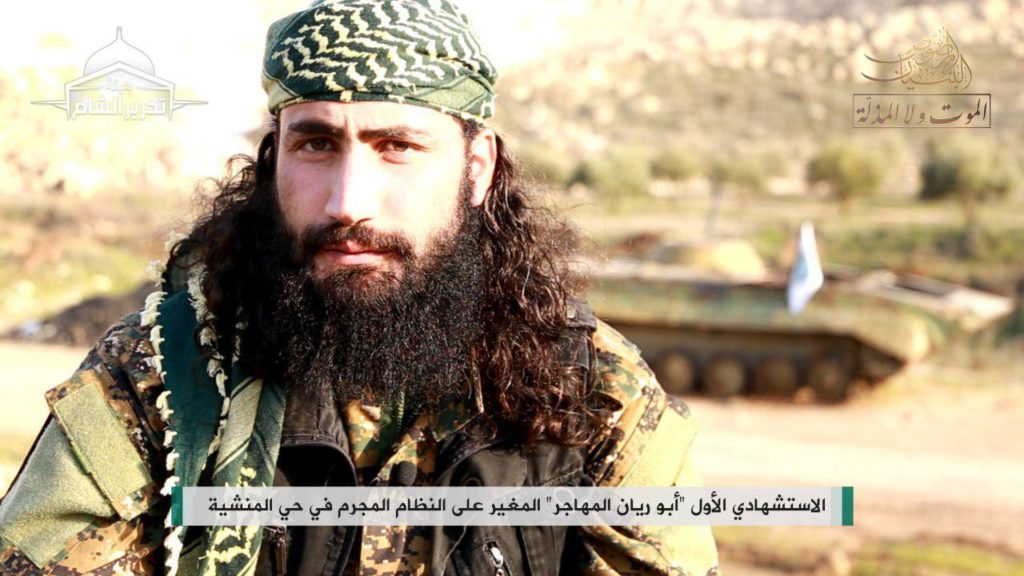
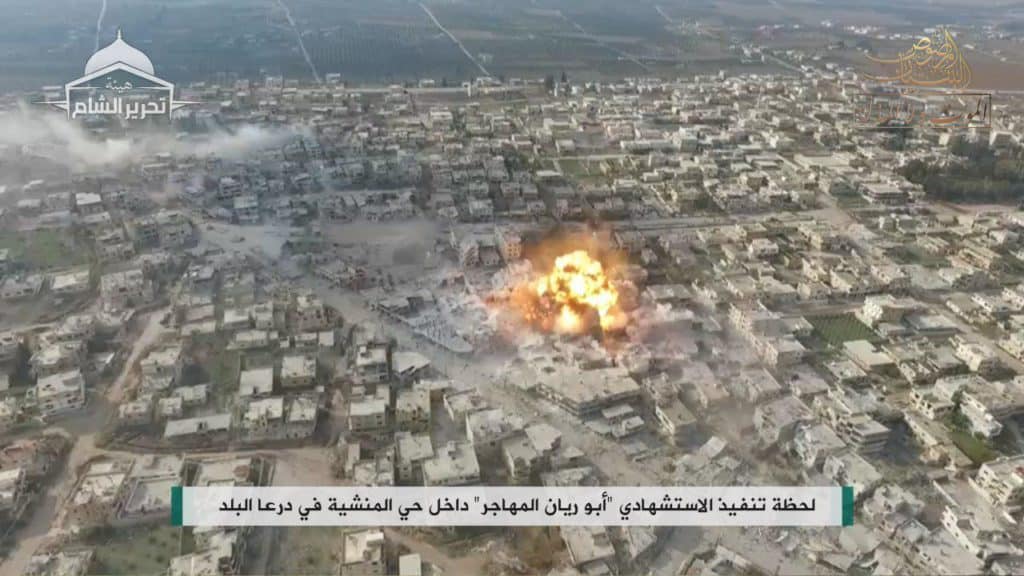
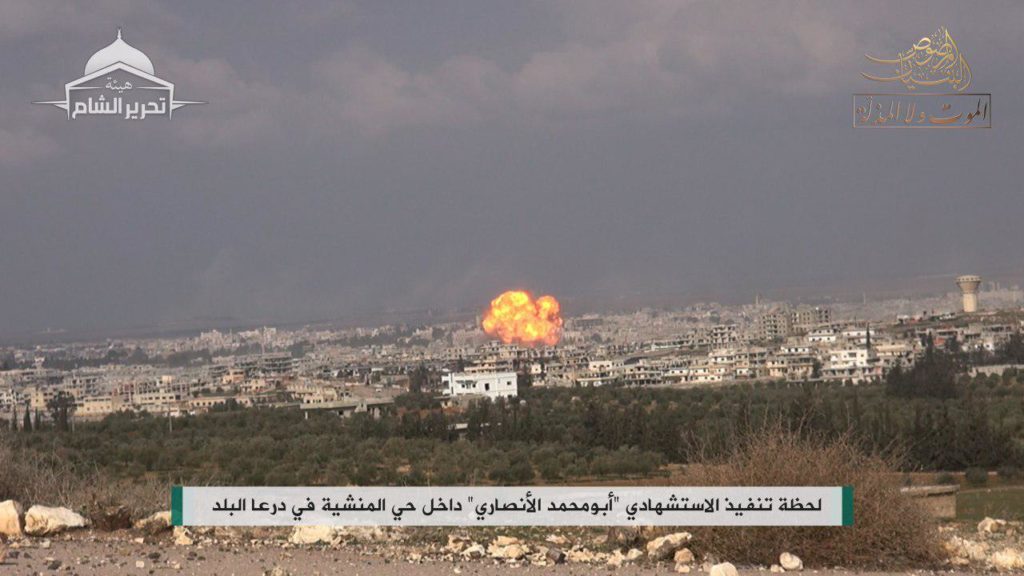
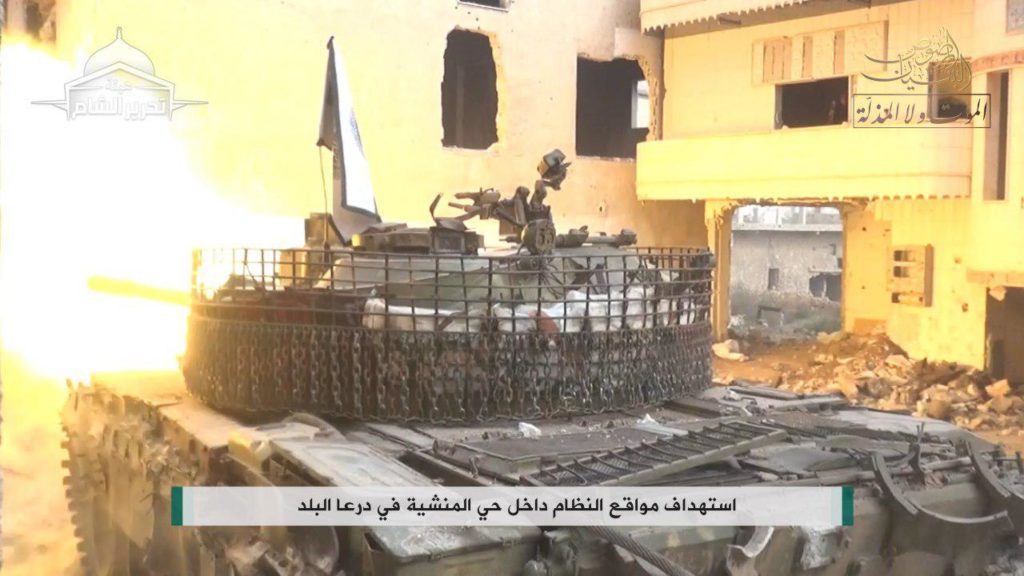
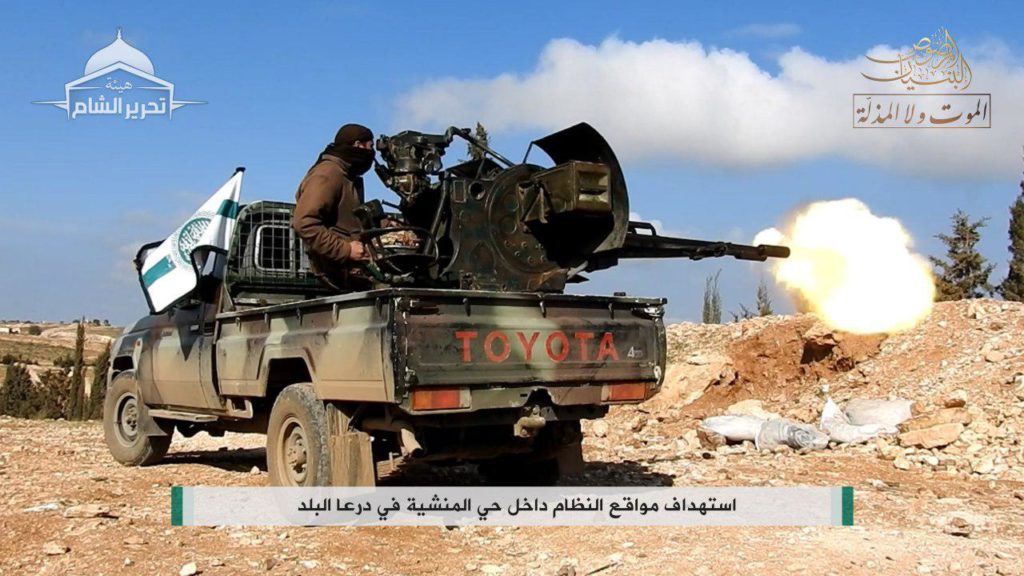
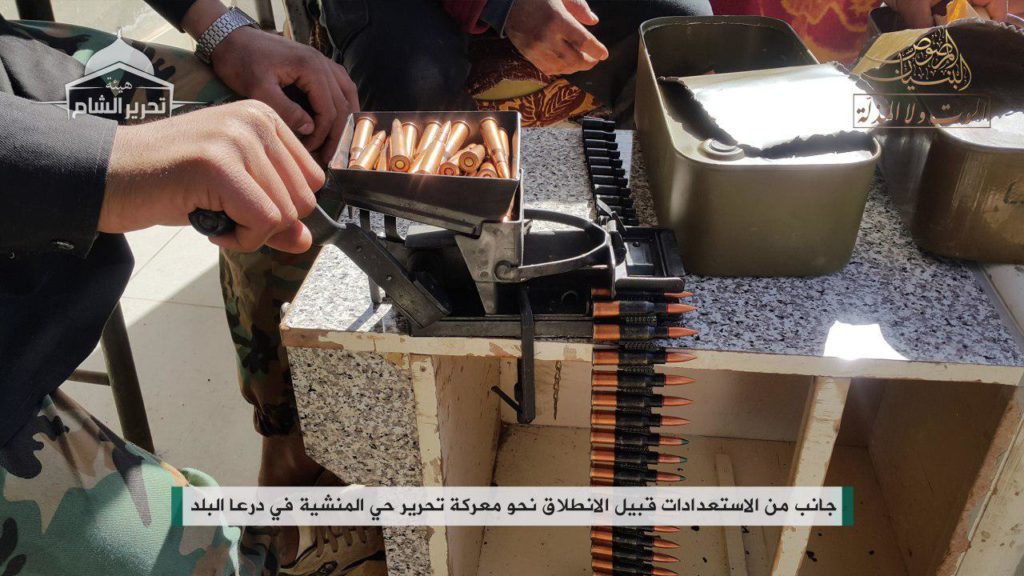
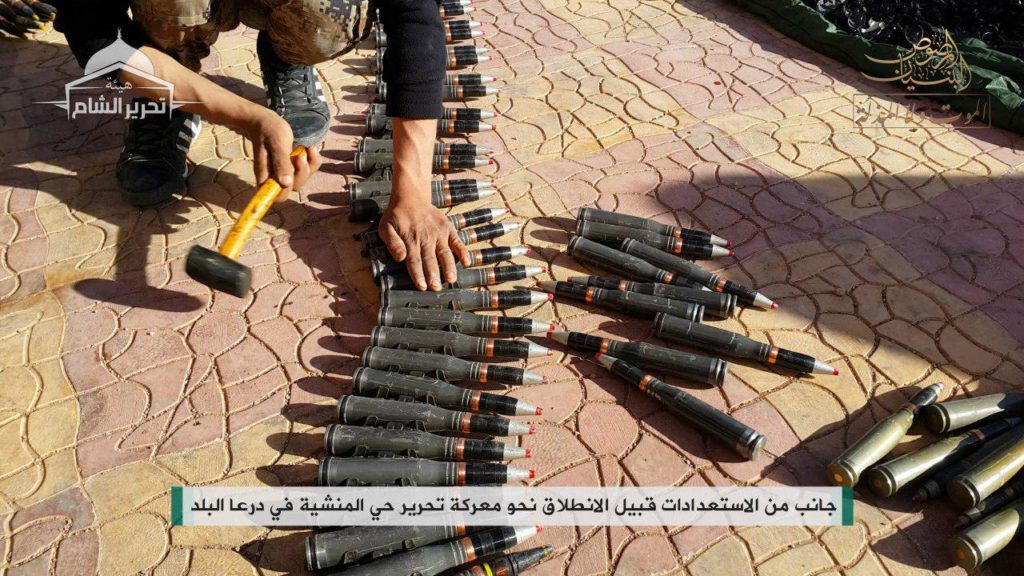








1 Comment
Hi. I have one question. who controls the capital of quneitra province?